Designer Take on Organic Finishes in Madrid
This residence, designed by the architects from Madrid-based Studio MÍNIMO, has all the keys to choosing the finishes for your home.
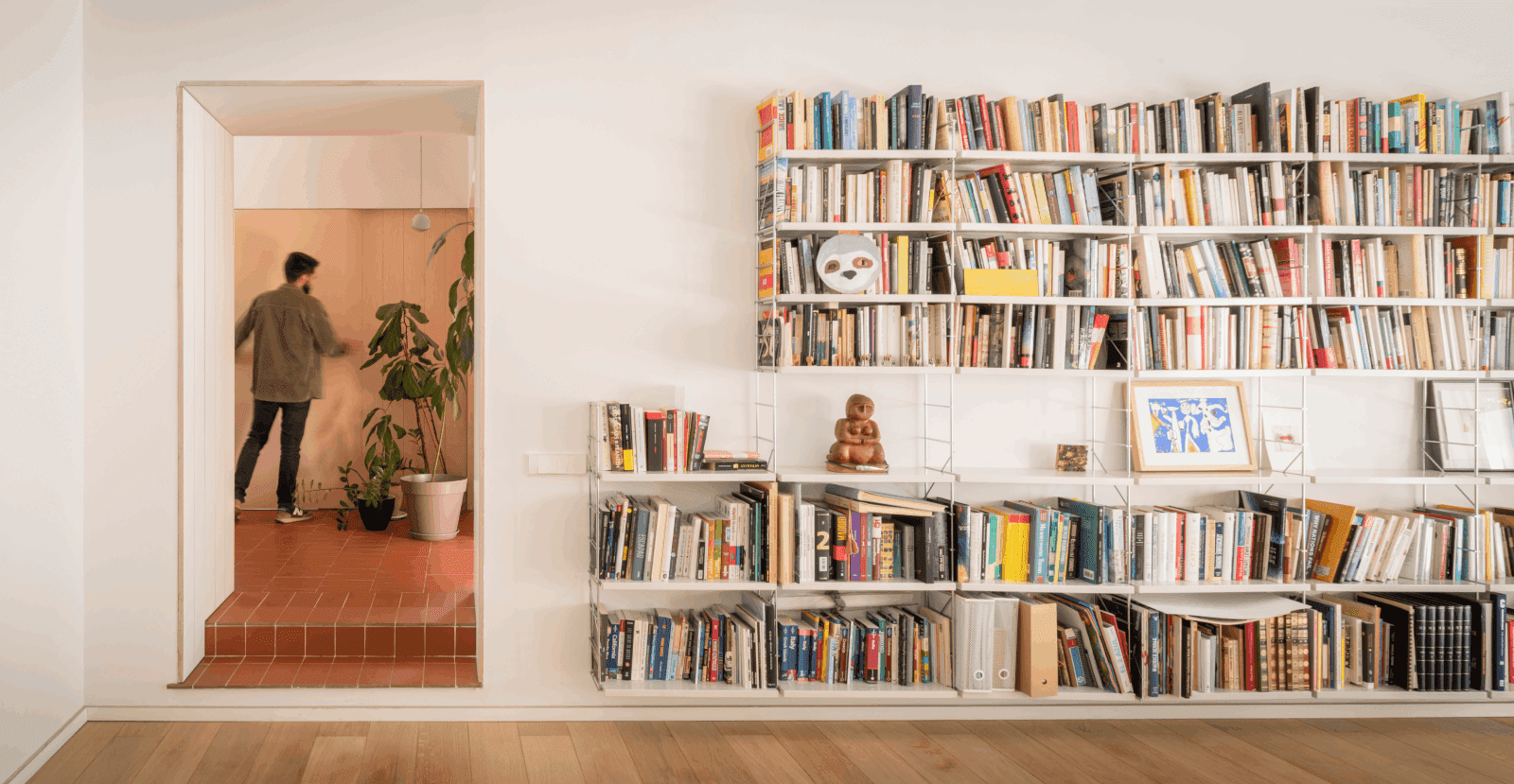
Interior design is much more than furniture and colors. A crucial aspect of any interior design project is the selection of materials and textures that cover ceilings, floors, and walls. These surfaces, known as finishes, undoubtedly have the ability to transform our interiors.
Discover with us a fantastic home in Madrid (Spain) with the best finishes, and we will reveal why the finishes we pick for our interiors are so important and how to make the best choices in house finishes.
The importance of home finishings
Talking about finishes (whether renovating or building a home) is talking about surfaces, the materials and textures that cover walls, floors, or ceilings. Of course, the options are almost endless, from wood to metal panels, ceramics, linoleum, wallpaper or stone. Each of these materials offers different properties and benefits.
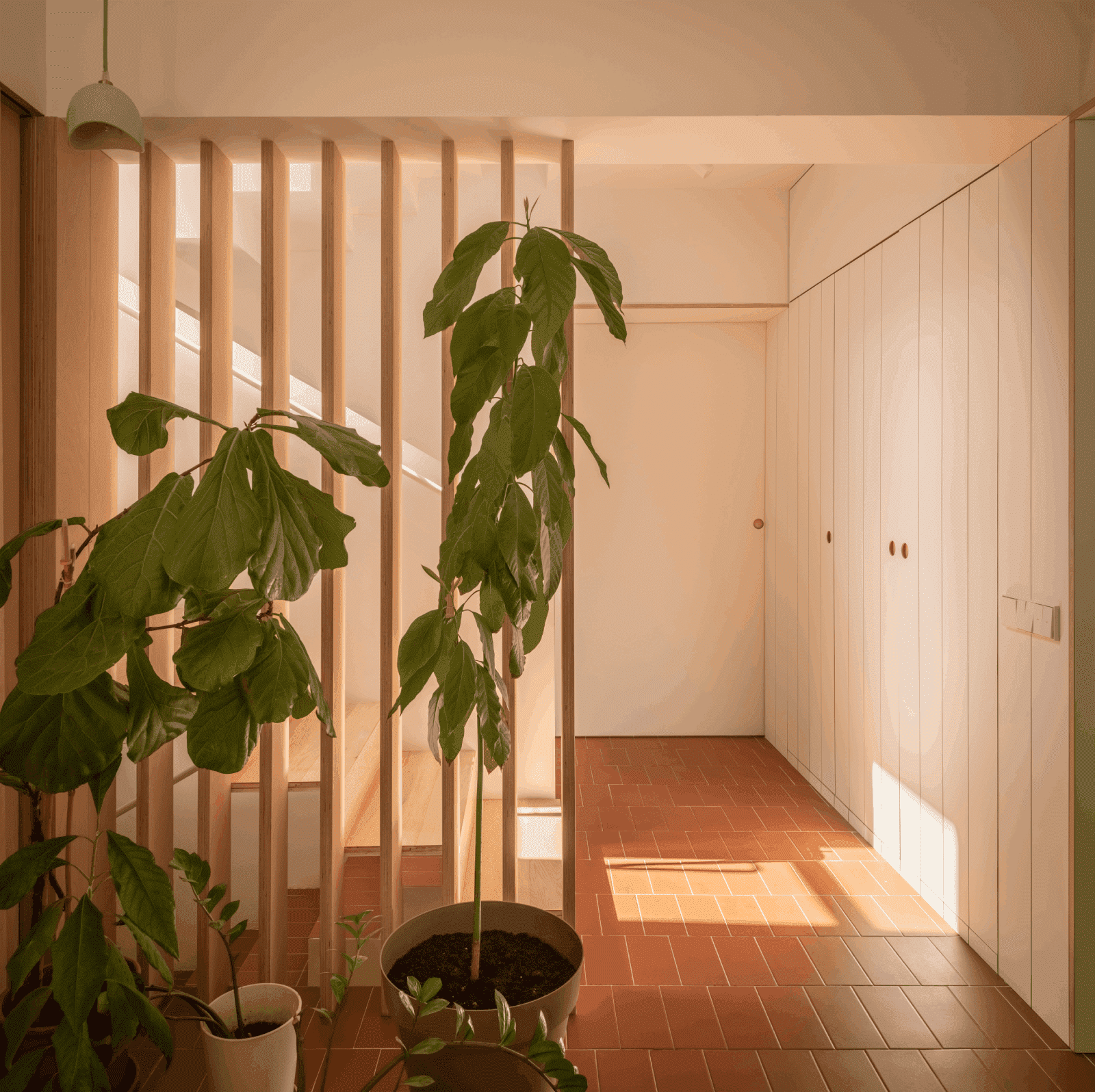
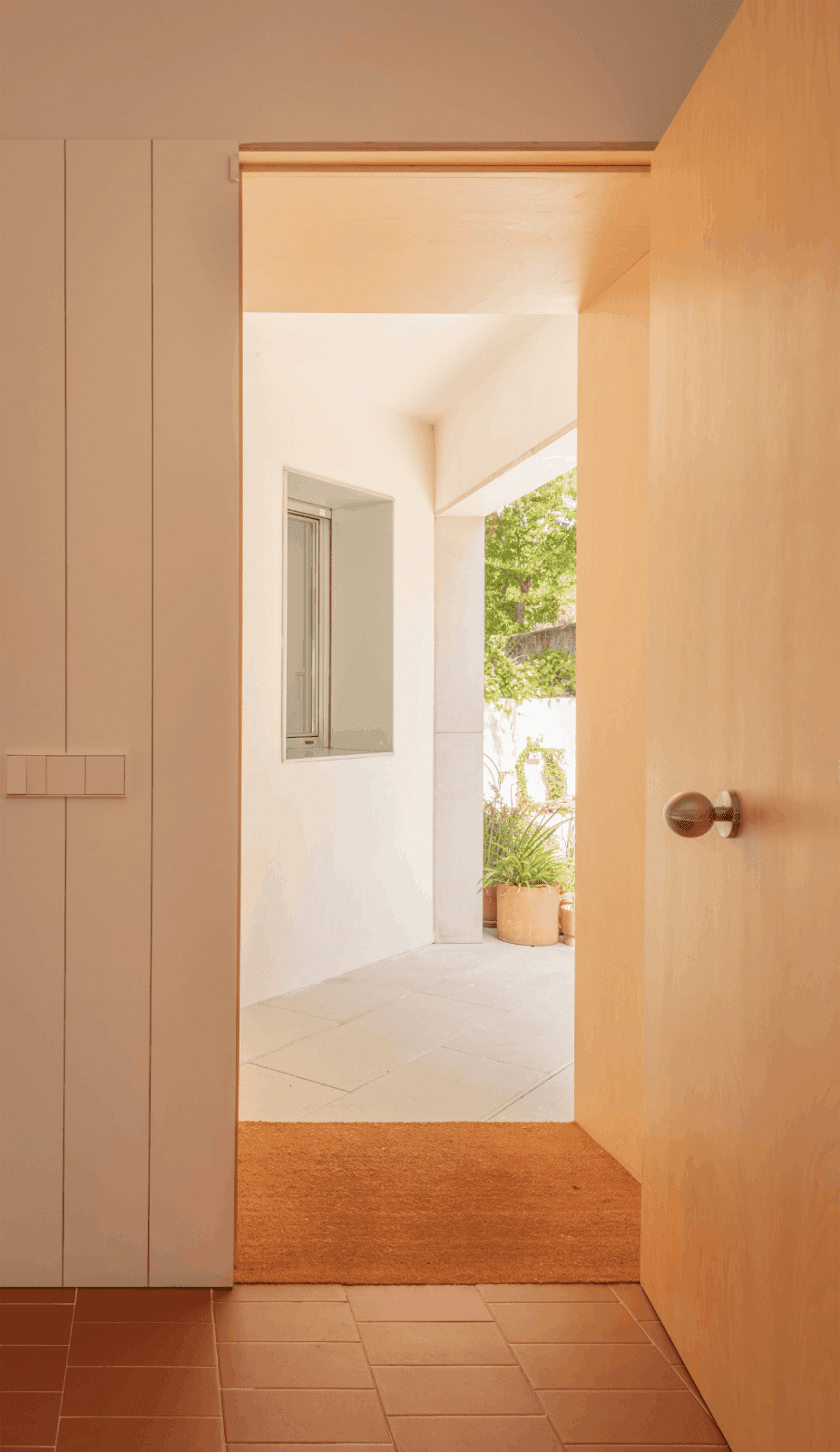
House M15, renovated by MÍNIMO Studio. Images by Amores Pictures.
By selecting one material over another, you can achieve more or less durability or resistance, as well as very different aesthetics, or even improve the thermal insulation. Each of these materials will bring a different feel to our spaces. For example, polished surfaces can make an interior feel clean—almost sterile—while certain organic materials offer a very desirable warmth.
Therefore, choosing the right finishes for your home is essential in any design or architecture project. A good example of this is this Madrid (Spain) home by MÍNIMO Studio.
M15: A house in Madrid
In the Madrid neighborhood of Chamartín, you'll find the single-family home M15, expertly renovated by the architecture studio MÍNIMO. The space distribution, finishes, and attention to detail breathe new life into a construction that dates back to the 1930s.
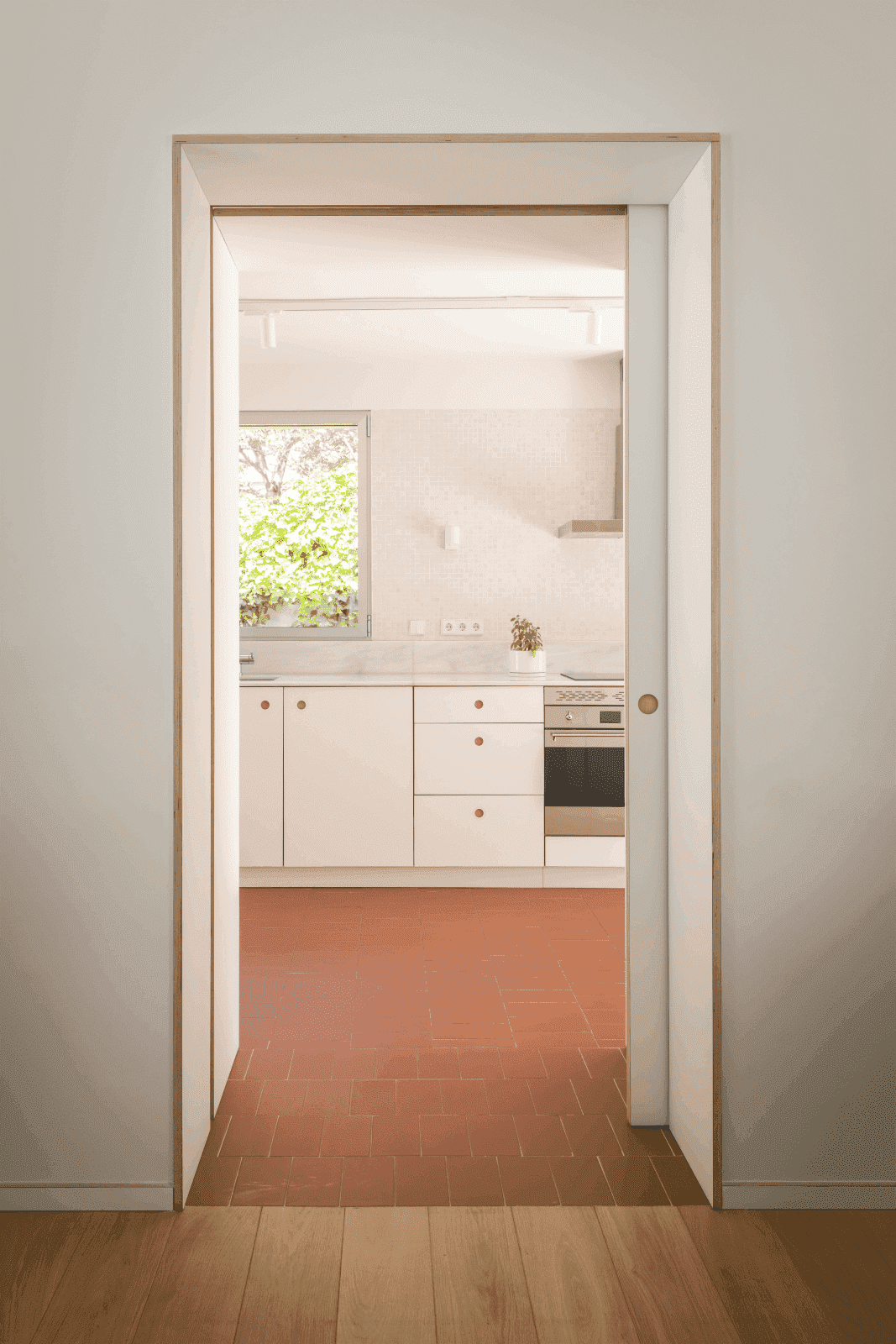
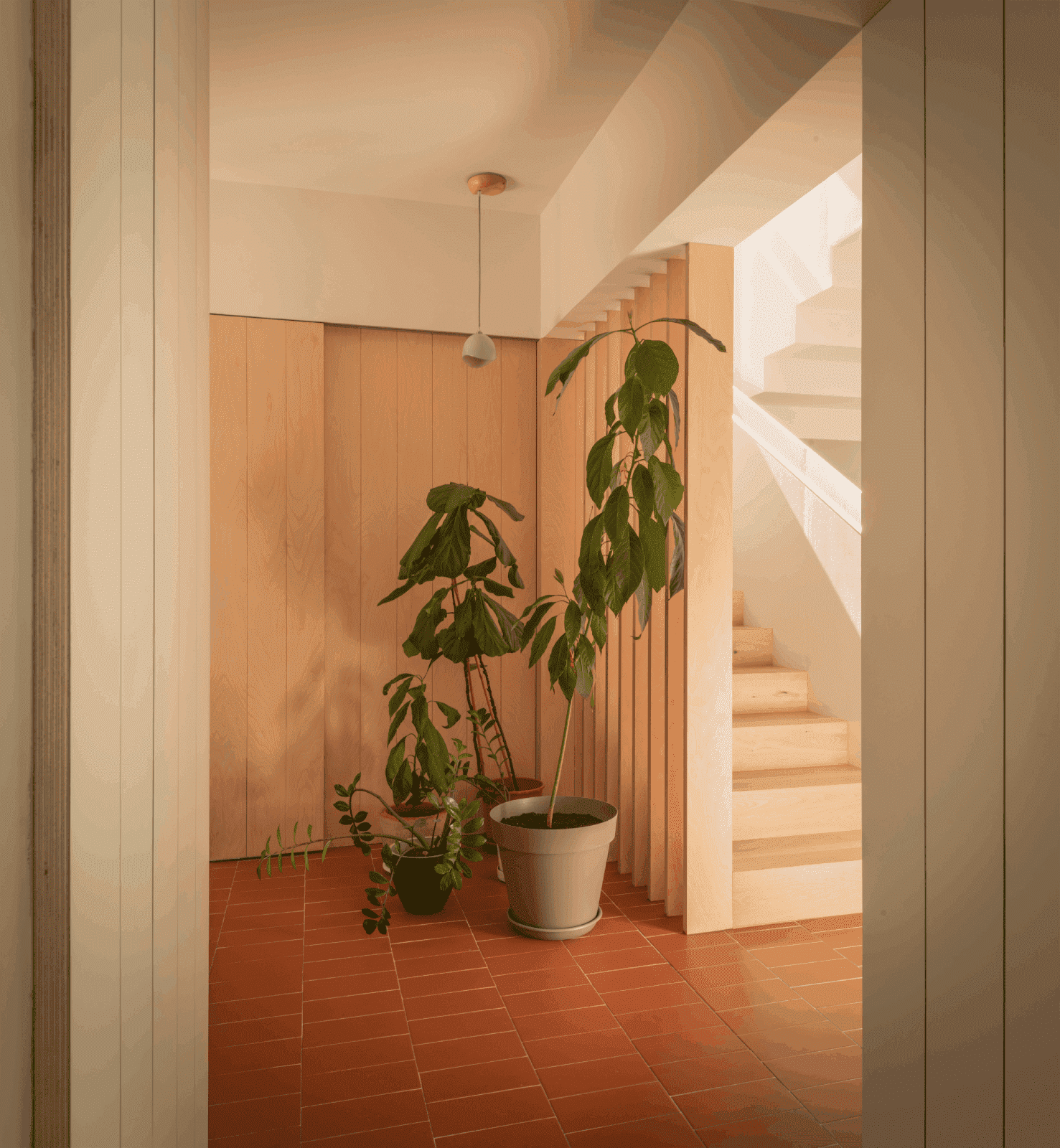
House M15, renovated by MÍNIMO Studio. Images by Amores Pictures.
This independent single-family home with a garden is part of Madrid’s well-known "Colonias". The Madrid Colonies were developments built on the city’s outskirts, following a "garden city" model, which included residential areas with green spaces around the city center, providing homes for the new population of the growing city. But now, after almost a century, these developments have become sought-after central areas of Madrid.
In the renovation, the identity of this historic home is preserved but updated with a new distribution and aesthetic. On the outside, the house remains a small independent brick building, but on the inside, the distribution is completely modernized. After the renovation by Estudio MÍNIMO, the different areas of the house are perfectly interconnected (both with each other and with the garden). The day and night spaces are separated between the two floors, and the garage has been converted into the new kitchen, gaining square meters for daily use.
The finishes of House M15
Despite its dominant white color and the multiple metal details of stairs and other installations—let us not forget that it is an intrinsically modern work—the project is warm and intimate. To a large extent, this is due to the finishes chosen for the rehabilitation. The wood that covers the walls and floors, and the brick-colored ceramic floor that extends throughout much of the ground floor, offer an organic and cozy tone. They are the perfect finishes for a home like this: simple and respectful of its environment and history.
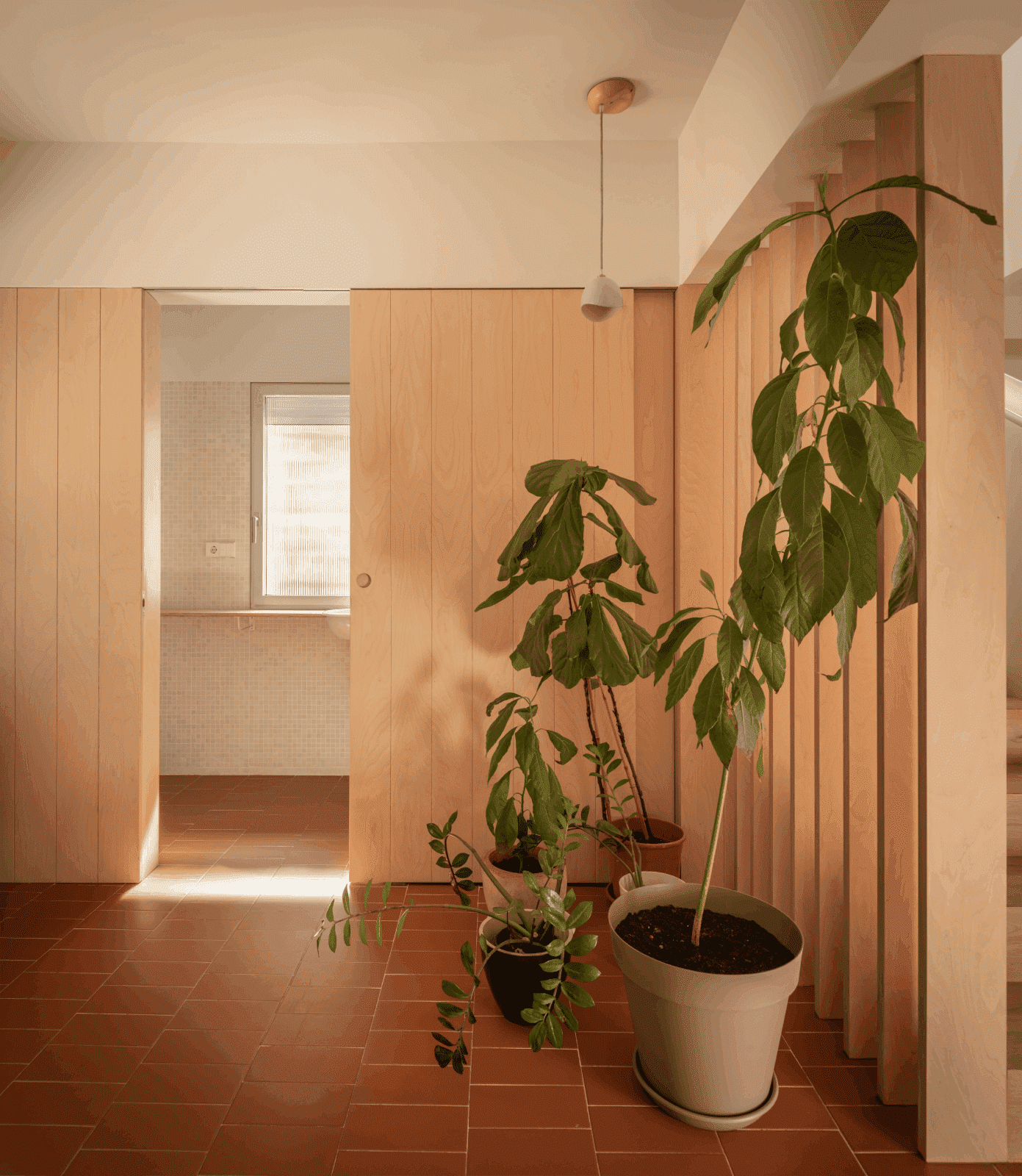
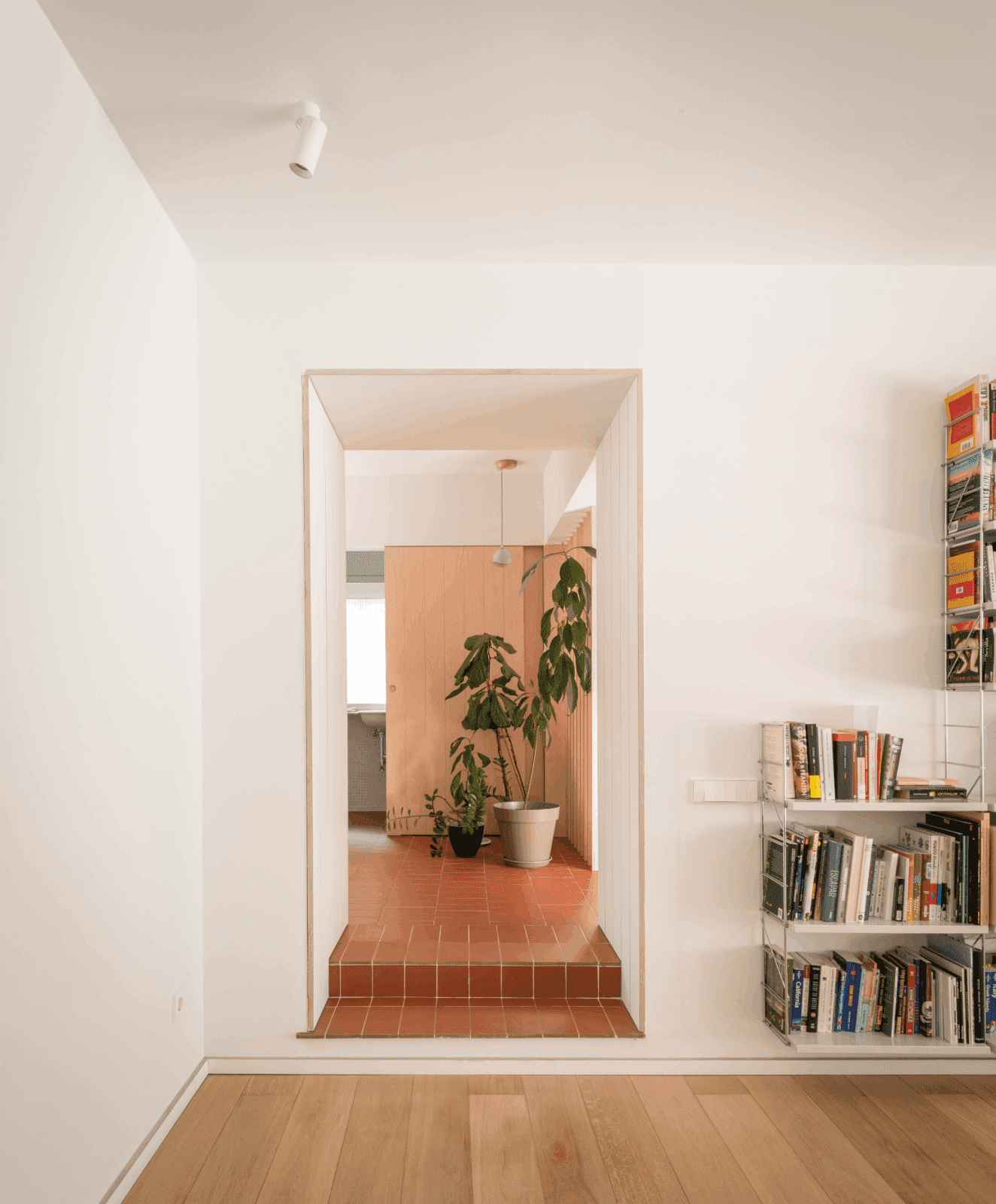
House M15, renovated by MÍNIMO Studio. Images by Amores Pictures.
Those reddish slabs—from the Spanish company Gres Aragón—are Klinker porcelain flooring. Klinker-type pavements and bricks are made with special clays and fired at high temperatures. They also offer many features, such as resistance to abrasion and even antibacterial properties. Thus, using this particular finish offers practical benefits while continuing the exterior aesthetics inside the home, preserving the aesthetic language of brick, typical of Madrid.
MÍNIMO Studio
MÍNIMO Studio is an up-and-coming Madrid-based architectural studio founded by Alberto Rubial Alonso and Sergio Sánchez Grande. Located in the Spanish capital, MÍNIMO specializes in optimizing spaces in a city filled with small apartments and homes, aiming to live large despite the space limitations. Rubial and Sánchez work to create environmentally respectful and efficient buildings. Of course, all of this is applied in the M15 residence.
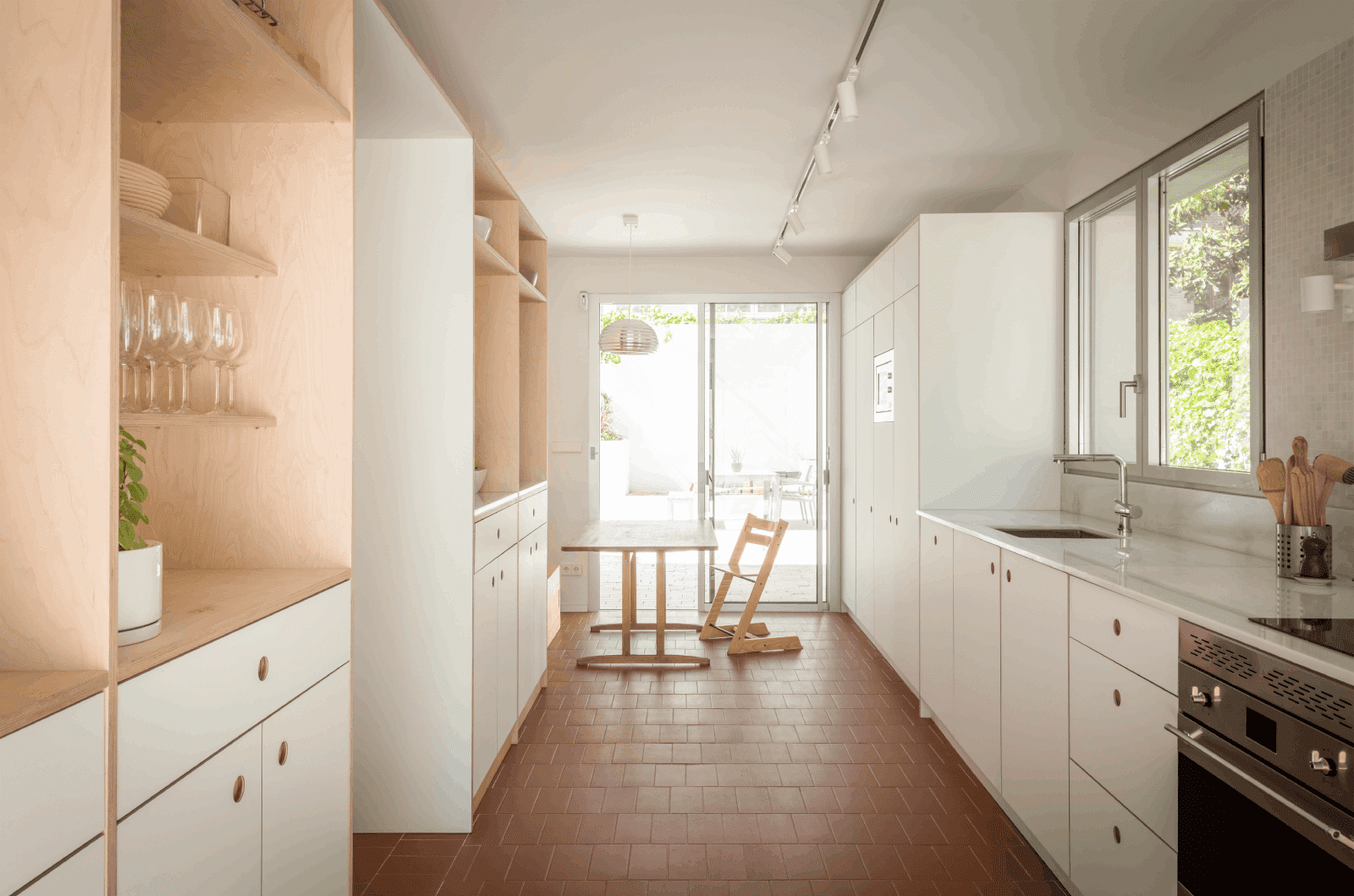
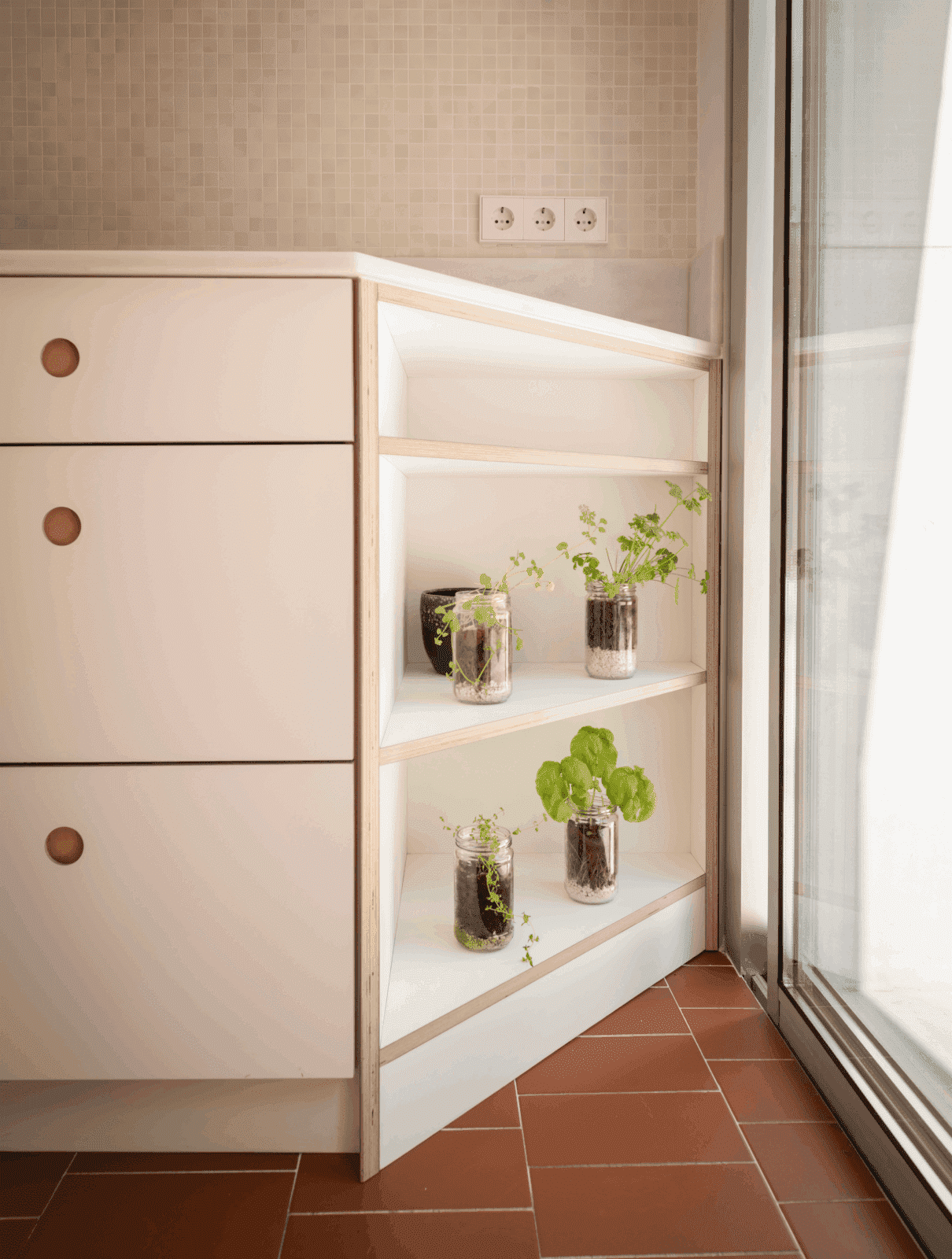
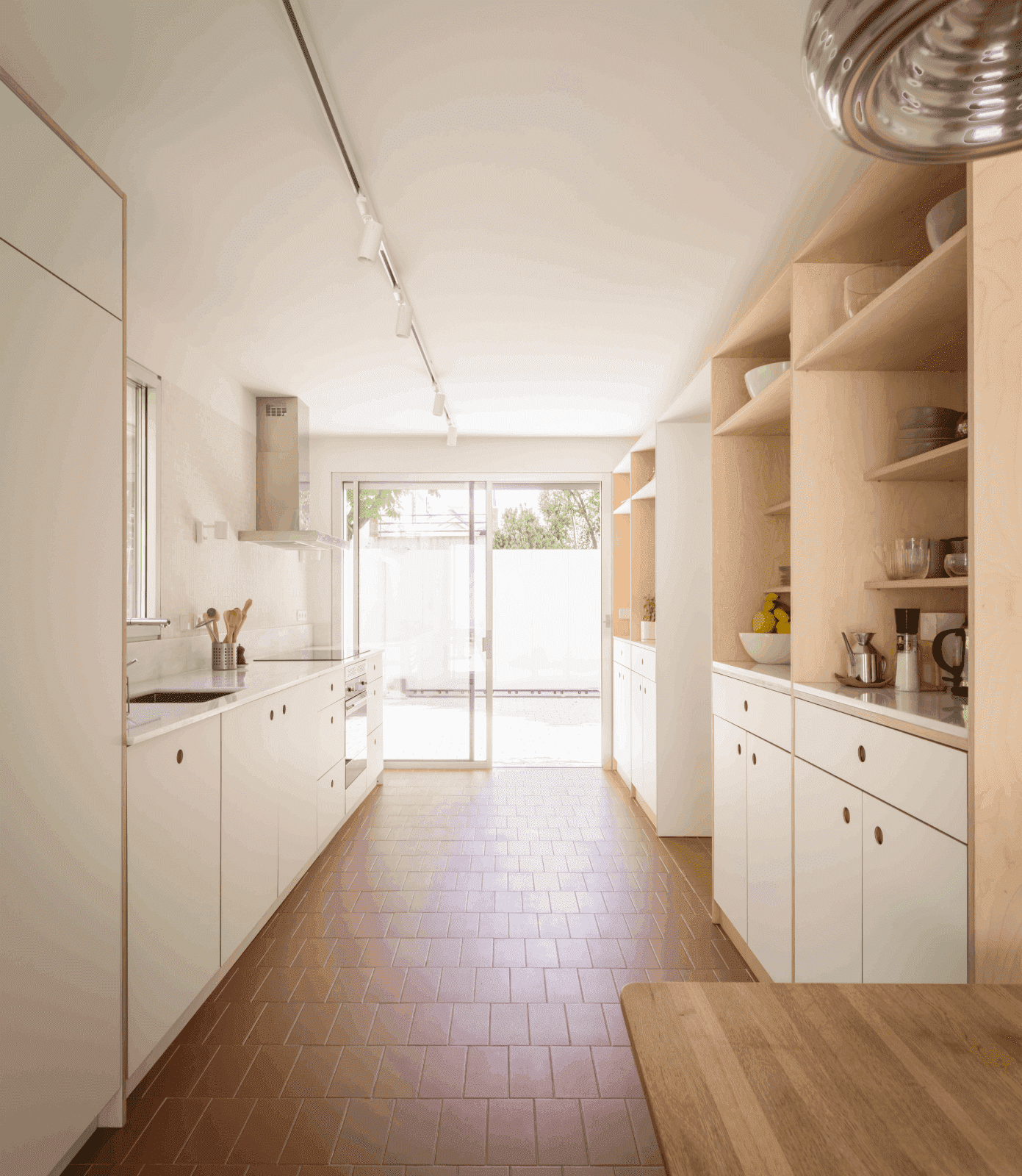
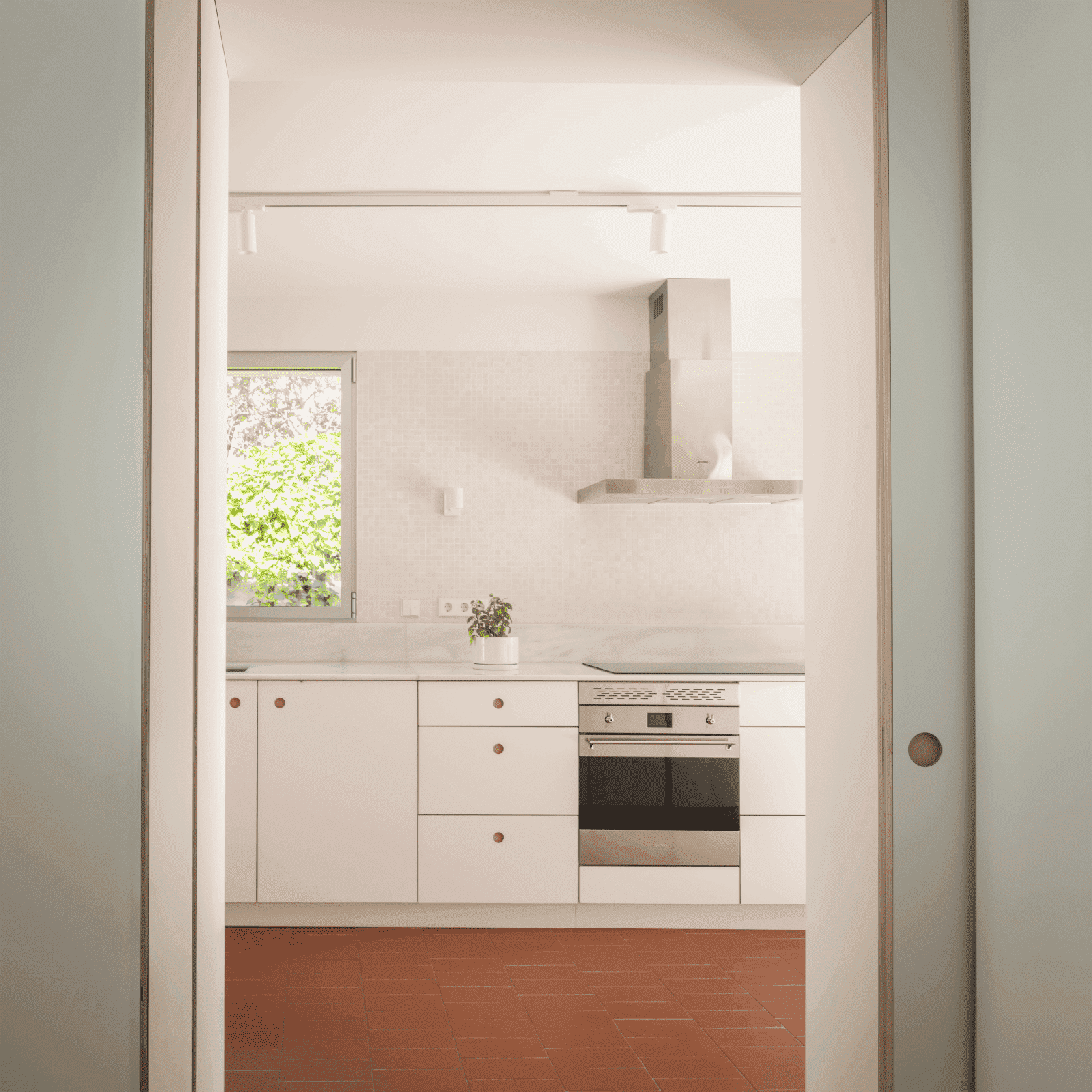
House M15, renovated by MÍNIMO Studio. Images by Amores Pictures.
How to choose the perfect finishes for your home
As we've seen, the choice of flooring, wall panels, ceiling installations, or parquet significantly affects the appearance and functionality of your home. Therefore, making practical and informed choices is important, without forgetting something crucial: personal taste.
When deciding on house finishes, the following points will help you make the best decision:
- Define your style: Before making specific decisions, determine the overall style you want for your home. Do you prefer a modern, classic, rustic, or contemporary style? This will guide you towards finishes that align with your tastes and goals.
- Set a budget: Define a clear budget for different finishes. This will help limit your options and make more informed decisions.
- Coherence and consistency: Strive to combine different spaces in the house. Ensure the finishes flow naturally from one room to another, creating a harmonious feeling throughout the home. Choose a consistent color palette and materials that complement each other for sophisticated and relaxing interiors.
- Durability and maintenance: Consider the durability of materials and the need for maintenance. Some finishes may be easier to maintain than others, especially in high-traffic areas.
- Natural and artificial light: Take lighting into account. Colors and materials may look different under natural and artificial light, so evaluate how finishes appear in different lighting conditions.
- Consult with professionals: Work with interior designers or architects who can provide professional guidance. They can help you make decisions that align with your tastes, budget, and practical needs.
- Request samples: Request material samples whenever possible. Seeing and touching the materials will give you a better idea of how they will look and feel in your space.
- Prioritize by room: Set priorities for key areas. Some rooms may require a greater investment in certain finishes, while others may allow for more budget-friendly options.
- Trend or timelessness: While trends are exciting, it's also important to choose finishes that you will enjoy in the long run and won't get tired of.
- Sustainability: Consider sustainable options if it's something you value. Eco-friendly and organic materials may not only be good for the environment but also for your long-term health.
- Conduct tests: If you're undecided, start with small test areas before committing to the entire space. Painting a sample on the wall or installing a small piece of flooring can help you better visualize the options. Additionally, you can use interior design software such as Planner 5D to visualize different combinations of colors and materials.
